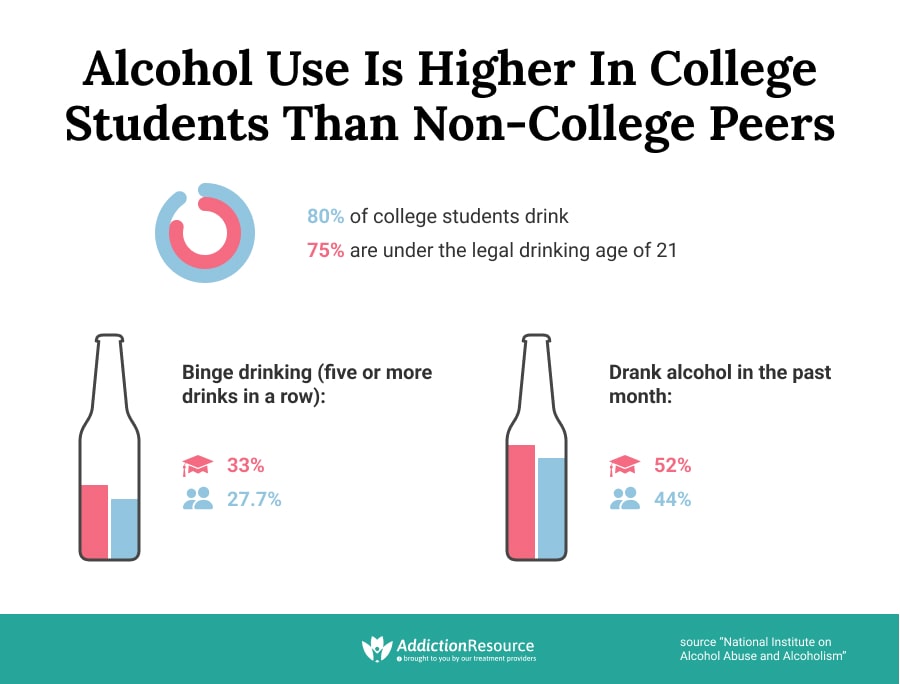Article
College Drinking: Students Switching Anxiety for Addiction
Authored by Nena Messina, Ph.D for Addiction Resource
At a Glance
College drinking is a prevalent issue, driven by new challenges, responsibilities, and the desire to fit in, with 52.5% of full-time students reporting recent alcohol consumption. Factors such as easy access to alcohol, unstructured time, and stress contribute to this problem. Binge drinking is common, leading to risky behaviors, academic problems, and health issues. College drinking results in severe consequences, including injuries, assaults, and even deaths.
Additionally, drugs like marijuana, anabolic steroids, and study drugs are commonly abused on campuses. Prevention and intervention efforts, such as school-based programs, motivational interviewing, and family involvement, are crucial in addressing substance abuse among college students. Recognizing signs of abuse and seeking professional help can prevent severe consequences and support recovery.

The Key Takeaways
Prevalence of College Drinking
College drinking is widespread, with 52.5% of full-time students reporting recent alcohol consumption. This behavior is influenced by the new challenges, responsibilities, and social pressures associated with college life.
Contributing Factors
Factors such as the easy availability of alcohol, unstructured time, limited family interactions, inconsistent underage drinking laws, and stress contribute to the high rates of alcohol consumption and abuse in college.
Consequences of Binge Drinking
Binge drinking is common among college students, leading to risky behaviors, poor academic performance, and serious health issues. It is associated with injuries, assaults, academic problems, and even fatalities, with over 1,700 student deaths annually due to alcohol-related causes.
Drug Abuse on Campus
Besides alcohol, drugs like marijuana, anabolic steroids, study drugs (e.g., Adderall), and party drugs (e.g., ecstasy, cocaine) are commonly abused on college campuses, posing additional health risks and legal issues.
Prevention and Intervention
Effective strategies to address college drinking and drug abuse include school-based prevention programs, family-based interventions, motivational interviewing, and alcohol education programs. Recognizing signs of substance abuse and seeking professional help are crucial steps in preventing addiction and supporting student recovery.
Support Systems and Recovery
Addiction treatment facilities and counseling services provide essential support for students struggling with substance abuse. These programs often involve holistic therapies and family support to help students overcome addiction and manage their academic responsibilities.
About Addiction Resource
Addiction Resource is an educational platform for sharing and disseminating information about addiction and substance abuse recovery centers. Addiction Resource is not a healthcare provider, nor does it claim to offer sound medical advice to anyone. Addiction Resource does not favor or support any specific recovery center, nor do we claim to ensure the quality, validity, or effectiveness of any particular treatment center. No one should assume the information provided on Addiction Resource as authoritative and should always defer to the advice and care provided by a medical doctor.
Read the full article to learn more.
